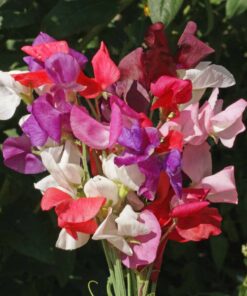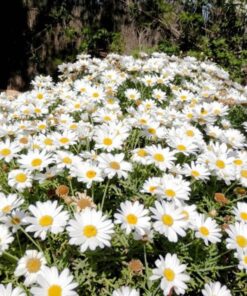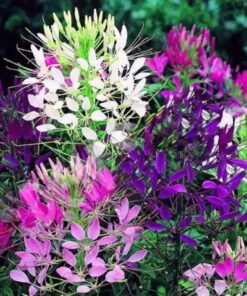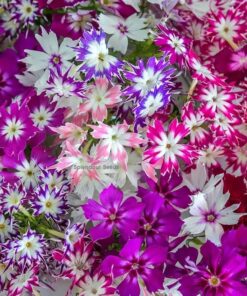Aster Matsumoto Mix color seeds pack of 40-50 seeds Imported
₹50.00
Out of stock
Email when stock available
SKU: Aster-1
Category: Winter Flower Seeds
Aster Matsumoto is a variety of Aster that is prized for its vibrant, daisy-like flowers and compact growth habit. It is particularly popular for its ability to provide a burst of color to gardens in the late summer to fall, which is when most other flowers are winding down. This variety typically features an array of bright, bold colors, ranging from pinks and purples to whites and reds.
Key Features of Aster Matsumoto
- Flower Color: Aster Matsumoto typically blooms in a range of colors, including pink, purple, red, or white, with a yellow or golden center.
- Flower Shape: The flowers are daisy-like, with numerous narrow, petal-like structures surrounding a central yellow disk.
- Height: This variety is a compact plant, growing to a height of about 12-18 inches (30-45 cm), making it ideal for borders, container gardening, or smaller garden spaces.
- Bloom Time: Aster Matsumoto is a late-blooming plant, typically flowering from late summer to fall, with its peak bloom occurring around September or October, depending on your region.
- Hardiness: It is hardy in USDA zones 5-9, which means it can tolerate cold winters in some areas but may need to be treated as an annual in regions with harsh winters.
Growing Aster Matsumoto
1. Planting Location
- Sunlight: Aster Matsumoto thrives in full sun to partial shade. It does best with at least 6 hours of direct sunlight each day to encourage abundant blooms.
- Soil: Prefers well-drained, fertile soil with a slightly acidic to neutral pH. Asters can tolerate a variety of soil types but will bloom best in rich, loamy soil with organic matter.
- Spacing: Space plants about 12-18 inches (30-45 cm) apart to allow for good airflow and to prevent overcrowding.
2. Planting Time
- Spring or Fall: Aster Matsumoto can be planted either in spring (after the last frost) or in early fall. If planting in the spring, ensure the soil is workable and has warmed up to ensure healthy root development.
3. Watering
- Watering Needs: Aster Matsumoto prefers moderate watering. Keep the soil consistently moist, especially during the growing season, but avoid waterlogging, as asters are susceptible to root rot.
- Watering Tips: Water the plant at the base to avoid wetting the foliage, which can encourage fungal diseases. Once established, Aster Matsumoto is relatively drought-tolerant, but consistent moisture during dry spells helps maintain healthy growth and blooms.
4. Fertilizing
- Pre-Planting Fertilizer: Before planting, you can incorporate compost or a balanced fertilizer into the soil to provide nutrients.
- During Growth: Asters benefit from a balanced, slow-release fertilizer applied in early spring. Avoid excessive nitrogen, as this can lead to lush foliage at the expense of flowers.
- After Blooming: Once the blooming period ends, you can stop fertilizing to let the plant prepare for winter (if growing as a perennial).
| Color | Mix |
|---|---|
| Germination Level | Medium |
| Growth Pattern | Up right Straight |
| Hybrid or Open Pollinated | Hybrid |
| Ideal location | Full sun |
| Origin Country | Japan |
Be the first to review “Aster Matsumoto Mix color seeds pack of 40-50 seeds Imported” Cancel reply
You must be logged in to post a review.
Related products
Winter Flower Seeds
Rated 5 out of 5
₹40.00
Winter Flower Seeds
Mesembryanthemum Ice plant Mix Color 40-50 seeds Open Pollinated
Rated 5 out of 5
₹50.00
Winter Flower Seeds
Phlox Twinkle Star Seeds flower Hybrid seeds pack of 40-50 seeds Open Pollinated
₹50.00












Reviews
There are no reviews yet.